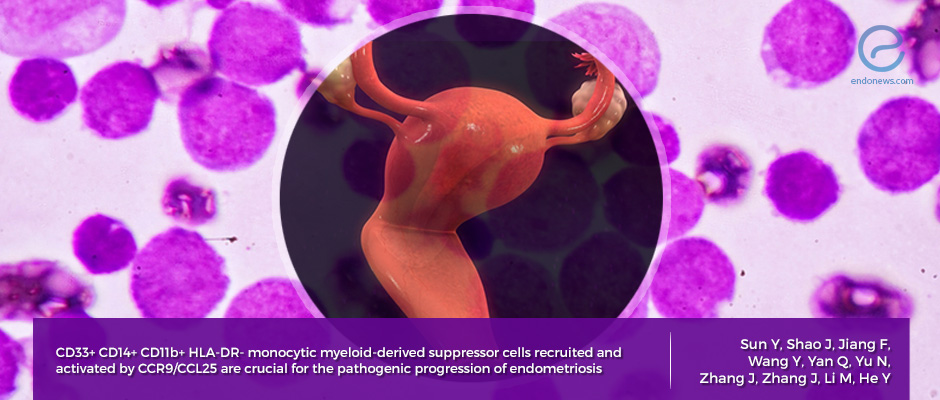Importance of monocytic myeloid derived supressor cells in endometriosis
Jul 1, 2019
Potential treatment target in endometriosis: monocytic myeloid derived supressor cells
Key Points
Highlights:
- Myeloid-derived suppressor cells (MDSCs) are immature myeloid cells that play a major role in immunosuppression in several diseases including cancer, inflammation and several others.
- The study by Ya Sun and associates revealed that the monocytic MDSCs (M-MDSCs) play an important role in the pathogenesis and progression of endometriosis.
Importance:
- If the etiopathogenesis and the mechanisms are clarified, these cells may be a potential target for treatment modalities for endometriosis.
Background
- Well-known implantation hypothesis cannot fully explain the pathogenesis and progression of endometriosis.
- Currently, the role of the interaction between endometrial cells and immune cells in the pelvic microenvironment are under evaluation, concerning the regulation of endometriotic growth.
- Myeloid-derived suppressor cells (MDSCs), play a major role in immunosuppression in cancer, inflammation and several other diseases.
- Two major populations of these cells are granulocytic (G-MDSCs) and monocytic MDSCs (M-MDSCs).
What's Done Here?
- Ya Sun and associates have investigated M-MDSCs and their function in peripheral blood of endometriosis patients.
Data:
- The authors found that M-MDSCs were the predominant MDSC type in peritoneal and peripheral blood mononuclear cells from endometriosis patients.
- The expansion and inhibition of M-MDSCs in vitro were detailed.
Lay Summary
Myeloid-derived suppressor cells MDSCs are immature myeloid cells that play a major role in immunosuppression in various disease processes.
Ya Sun and associates have investigated these cells in endometriosis utilizing various laboratory methods. published their results in the "American Journal of Reproductive Immunology".
Implantation hypothesis is a well-known theory, but it cannot fully explain why although nearly 90% of women have reflux menstruation but endometriosis occurs in only 5 to 10%. Currently, it is thought that endometriotic growth can be regulated by the immune system in the pelvic microenvironment through the interaction between endometrial cells and immune cells.
MDSCs are divided into two major populations: granulocytic (G-MDSCs) and monocytic MDSCs (M-MDSCs). The activity, migration, and the proliferation of the monocytic-MDSCs (M-MDSCs) were investigated n this study by using the peripheral blood of endometriosis patients.
The authors found that M-MDSCs were the predominant MDSC type in peritoneal and peripheral blood mononuclear cells from endometriosis patients. Specifically recruited and activated M-MDSCs play a crucial role in the pathogenic progression of endometriosis.
These findings suggest the important role of MDSCs in endometriosis providing a potential target for treatment, authors concluded.
Research Source: https://www.ncbi.nlm.nih.gov/pubmed/30375700
myeloid derived supressor cells pathogenesis progression endometriosis

